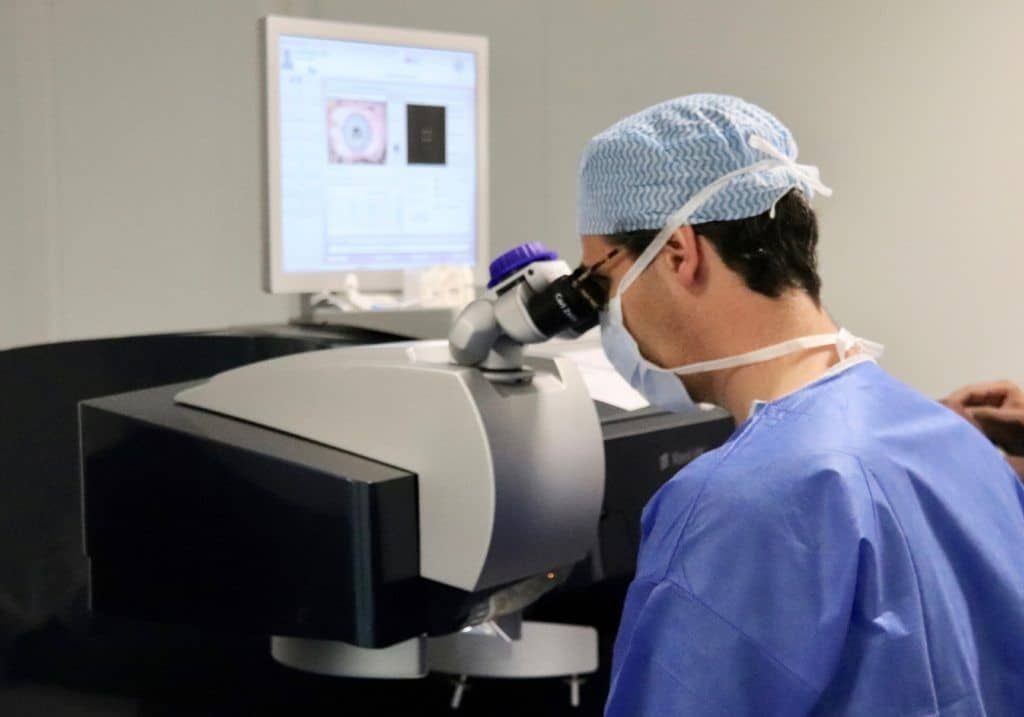What difference between laser PKR and trans PKR ?
A significant part of the French population has visual disturbances. It can s’to act’myopia, presbyopia,’astigmatism or even’farsightedness. Two main solutions can correct them, either wearing glasses or contact lenses, or surgery. Indeed, science and technologies having evolved, nowadays refractive surgery makes it possible to effectively correct certain defects of the’eye. Various techniques of’operation can be used for this purpose, with most surgeons generally choosing between laser PKR and trans PKR.
What is the difference between the two ? Explanations.
The PKR laser, an old technique that remains d’news
the PKR laser or Refractive PhotoKerectomy is the oldest refractive surgery technique. It nevertheless remains an operating technique on which’support many ophthalmic surgeons including those of the Laser Vision Institute. L’interest that remains for the latter s’explained by two main reasons.
D’on the one hand the performance of the latest generation lasers which give less scar fog, and d’on the other hand lower risks of serious complications due to the’lack of cutting.

Indeed, unlike LASIK, PKR does not require cutting of the hood. L’intervention’performs on the surface of the corneal stroma, after the’superficial corneal epithelium has been removed. Insofar as it s’is about’tissue, it usually regrows after a few days to cover the surface of the cornea.
VS’is D’elsewhere the reason why an intervention in PKR cannot be done without the epithelial layer being removed. If the laser was applied directly to it, the regrowth would make all the effects disappear in a few days.
Thus, by imprinting the correction in the stroma and not in the’epithelium, the PKR laser allows it to be long-lasting. This technique performed under local anesthesia is generally indicated in cases of’astigmatism or for low and medium myopia. This technique will also be preferred if your corneas are thin or irregular.
If your opinion as a patient counts with particular regard to the practice of’an activity, c’is up to the surgeon to determine’he will use this technique or the trans PKR.
The trans PKR, an improvement of the PKR
The trans PKR or transepithelial PKR not’is not strictly speaking a technique that the’can be called revolutionary. They’acts more’a relatively recent improvement in PKR. More than twenty years ago it had been proposed to proceed with the withdrawal of the’epithelium by a first burst of’laser pulse prior to the PKR, but the systematization of’such a method was difficult.
The trans PKR is situated in this same logic and meets the’approval of many eye surgeons.
Validated by several international studies, the trans PKR is indeed a technique that takes up the principle posed in the 1990s. Proposed by lasers which are currently marketed only by a German firm, it assumes that’one and the same laser performs the vaporization of the’epithelium and correction of the visual defect, all without any contact with your eye. This approach has undeniable advantages, as does the classic PKR.
The PKR laser and the trans PKR, the pluses and minuses

the laser PKR and trans PKR are operative techniques that are not diametrically opposed. They can be used the’one and the’another in the same cases, particularly in patients with’astigmatism d’hyperopia or myopia of 1 to 3 diopters. Of course the shape and the’corneal thickness should be amenable to’intervention.
There are, however, slight differences that can help in choosing the’one or the’other technique. They relate to:
- Speed of post-operative recovery. She is usually d’one week if the surgeon uses PKR and 3 to 4 days for trans PKR;
- The pain during the’very low intervention with the PKR laser and zero with the trans PKR insofar as there is no’there is no contact with your eye;
- The level of security which is excellent with the PKR and maximum with the trans PKR.
As for post-operative pain, they are present regardless of the technique used. They can last from 24 to 48 hours, their intensity being variable according to the degree of treated myopia. They are relatively weak in small myopias.
However, treatments can be prescribed by your surgeon to alleviate them.
the choice between laser PKR and trans PKR depends more on the surgeon than on you. However, in the event that the’one or the’other technique can be used the decision can be made’a common accord. NOT’do not hesitate therefore to inform your surgeon of all your questions before’a decision is made.
